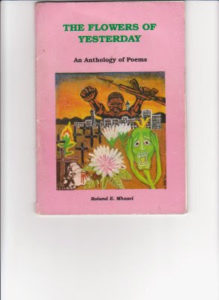THE MOHOLI LEMUR
The persona addresses the African animal whom he calls child of the Savanna…
The persona says that the child was born n bred in the Africa..
He talks of how one morning the animal was had been sent to do something by the mother.. How he had met his fate and died..probably at the hands of human beings who brutally murdered it.. The persona shows how he rightly denounces wat those people who killed the lemur did. It appears he is lamenting its death since he feels it deserves to live just like everybody else
The poem The Moholi Lemur is a lament for the death of an innocent animal. Humans are portrayed as intrusive, ruthless and destructive. Their selfish motives drive them to animal territories to wreck havoc. The poet thus assumes the role of an environmentalist to chastise the perpetrators of environmental degradation. Through personification of the moholi lemur, the poet draws the sympathy of the readers towards the poor animal. The animal is presented as a “child”. This brings out the notion of innocence.
The poet suggests that harming or killing these animals renders humans as brutal as animals cannot be regarded as wrong or right. “Running “errands for” the “mother” indicates that moholi right. “Running “errands for” the “mother” indicates that moholi lemurs live as families thus making killing one of the family members a cruel and an inconsiderate act. The poet validates the existence of animals in the wild. He argues that human beings’ meddling with wild animals’ habitat leads to unnecessary and exploitative interaction between humans and animals resulting in the death of animals.
Rhyme patterns used in the poem suggest a smooth and undisturbed life which animals lead without the interference of humans. The rhyme pattern is not fixed but occurs in places to suggest natural life characterised by different exciting experiences which the animals enjoy in their natural world. To buttress this quality of life, the poet employs the expression “virgin bushes”. This expression presents an unadulterated state of nature. Animals and nature are portrayed as being in perfect harmony with each other. Nature seems to flourish bountifully.
This is brought out by the description of the flowers which are “nascent”. This word suggests abundance and growth thus presenting a sharp contrast between a celebratory tone and a sad one introduced in stanza nine which depicts the death of the innocent animal.The brutality of humans is contrasted with the gentleness of the animals when the poet describes the physical appearance of both the animal and of human beings. Humans have “button-bright eyes”. This demonstrates precision and high degree of concentration as humans search diligently for innocent animals whereas the moholi lemur has “moist eyes” that suggests gentleness.
The brightness of the eyes indicates that humans are constantly looking for the animals in order to kill or harm them.This description portrays humans as ruthless beings. The brutality of humans is reinforced by the words they utter as they exclaim “take him !” The exclamatory expression connotes the intense desire to kill.By referring to humans with an infinite number (indicated by an ellipsis) of negative adjectives, the poet manages to convey his disapproval of killing animals. The nomenclature employed suggests an angry tone. Humans are described as a “betrayer” and a “sentencer”, thus portraying them as a single entity.
The poet describes the behaviour and the physical make up of humans in a grotesque manner to reflect the destructive motive that drives them into killing. The “flared nostrils” that are “turned up” depicts the boys as a subject of ridicule and mockery. This description also captures anger and intense hate directed at the poor innocent animal. The poet’s semantic field shows humans as a threat to animals. Words such as “fork”, “missile” and “breaking” suggest callousness and ruthlessness.
Although the poet seems to be occupied with denouncing a simple childhood enterprise, the message is directed towards all human beings. The “boyish brain” refers to a naive and myopic. mindset bent on gratifying immediate needs at the expense of environment. The poet draws the readers compassion by describing the moholi lemur as a “ball of fur”. A soft tactile image is created through the word “fur” thus denoting the moholi lemur as a harmless animal. There is a sharp contrast created between the “missile” and the “twiggy utensil”. This contrast juxtapositions the cruelty of humans and the mild temperament of animals. It is paradoxical that humans behave in wild manner as opposed to the wild animals which behave in a benign way.
Humans’ destructive mentality has a ripple effect. One destruction leads to the next. The poet illustrates this by ascribing human qualities to trees which are are seen shedding “tears” over the death of the moholi lemur. The poem borrows heavily from African oral tradition. In the first stanza, the structure resembles African praise poetry. The moholi lemur is addressed in a majestic way in order to affirm the existence of wild animals in their natural habitats. The poet maintains that the forest rightfully belongs to the animals hence they should be let be.


